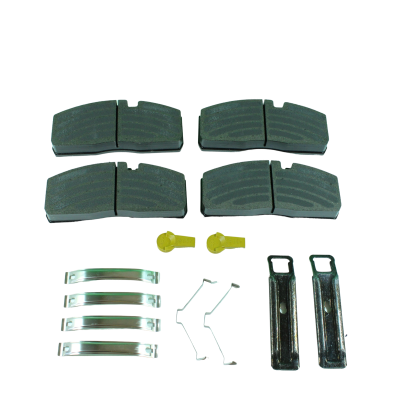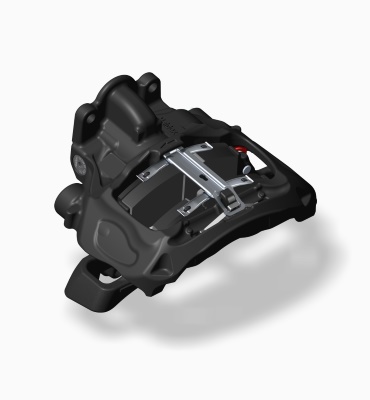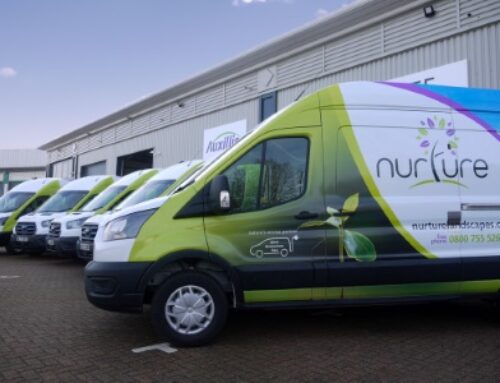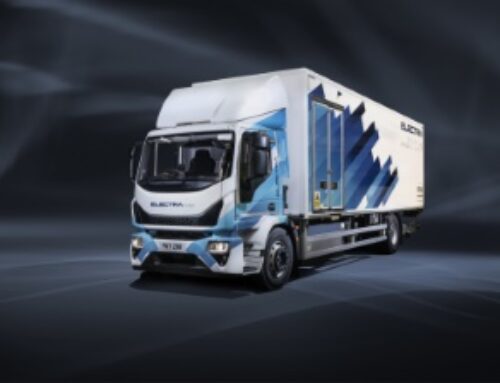Top braking tips from Haldex
 Trailer technology provider Haldex has issued advice to operators on how to get the best out of braking components.
Trailer technology provider Haldex has issued advice to operators on how to get the best out of braking components.
From frozen pizza to flat-pack furniture, not all products are at their best straight out of the box, points out the company; and another example is disc brake pads.
“Friction material contains a lot of different substances, and a big part of it is organic materials,” said Fredrik Rennstam, Haldex application engineer and technical support manager.
“You need to heat these materials up to achieve the correct friction level. Until after bedding in, the friction may be lower. It’s like baking a cake.”
This bedding-in process involves pressure but primarily temperature – exceeding 250ºC for an extended period – to stabilise the materials. Doing so will result in a 20-25 per cent improvement in braking performance, according to Jonas Benson, homologation and vehicle testing manager; though, having said that, overheating brakes can dramatically shorten their life far out of proportion of the increase in temperature.
In most cases, a few weeks of normal operation of a loaded vehicle will generate enough heat to stabilise the friction material. But to help operators get through the first 20 to 50 braking cycles, Haldex coats its pads with a grippy rubber-like coating, called Greencoat, to increase friction levels. By the time it has worn off, the pads should be bedded in.
In case of doubt, says the company, the best way to find out the state of the pads is to drive the vehicle onto a roller brake tester and record the output brake torque for each wheel end.
These tests usually take place at partial, rather than full load, Haldex continues, because of the risk posed to a tester of a potential rupture of a fully compressed air suspension bellows. Still, says the firm, with partial loading resulting in a minimum pressure of about 2-2.5 bar, it is possible to take two torque readings (up to wheel slip), and then extend those figures by linear extrapolation up to the maximum pressure. The company cites the R13 statutory requirements of 5m/s² for motor-driven vehicles and 4.5m/s² for semi-trailers. It says there may also be value in comparing the results of one wheel-end to another, as significant differences between brakes may indicate a problem.
Operators should always present a warmed-up vehicle to an RBT test, advises Haldex, as it is most likely to perform at its best. Humidity can accumulate on brake surfaces and corrosion can form on brake discs of vehicles parked up overnight or over the weekend, the firm adds; those factors might affect friction levels, and so performance, during the test.
It is another example of the close interaction between the wearing parts of a braking system.
“We always talk about a friction couple; brake pads are only half the story,” observed Rennstam.
In any case, brakes that have not been bedded in well may never reach their theoretical performance.
Benson added: “If the pad has gone to sleep so, it’s extremely hard to wake it up again, unfortunately.” Instead, he advises prevention.
Eco-driving technology such as engine brakes/retarders and predictive cruise systems tend to minimise use of the service brake, says Haldex, which can interfere with the bedding in process of new brake pads.
“If you drive too gently with any vehicle with friction material, you will not gain the optimal friction level, that’s for sure,” stated Benson. Said to be at particular risk are operators in flat countries, those with wet conditions and those operations that wash vehicles frequently where the pads may not have a chance to dry out.
 One radical suggestion is to enlarge a semi-trailer’s brake chamber size to a Type 18 or Type 20 from a Type 16 to reduce the braking pressures required to achieve a given torque, says Haldex. Even more significant would be making other changes according to a modified brake calculation, a process that would require a new vehicle type approval.
One radical suggestion is to enlarge a semi-trailer’s brake chamber size to a Type 18 or Type 20 from a Type 16 to reduce the braking pressures required to achieve a given torque, says Haldex. Even more significant would be making other changes according to a modified brake calculation, a process that would require a new vehicle type approval.
Failing that, Benson makes several operational recommendations and compares brake conditioning to exercise: best done regularly. One idea is for drivers to perform a normal brake application at least once or twice per day without using a retarder or engine brake
He observed: “That might seem like you’re not in line with environmental guidelines, but sometimes you must use the brake because if you have to replace them at 90-95 per cent of thickness, that’s also a waste of environmental resources – and money.”
With a knowledge of the complete brake system, not only its products and components, Haldex says its European service organisation can help customers analyse the vehicle and the brake system settings to optimise brake performance.










